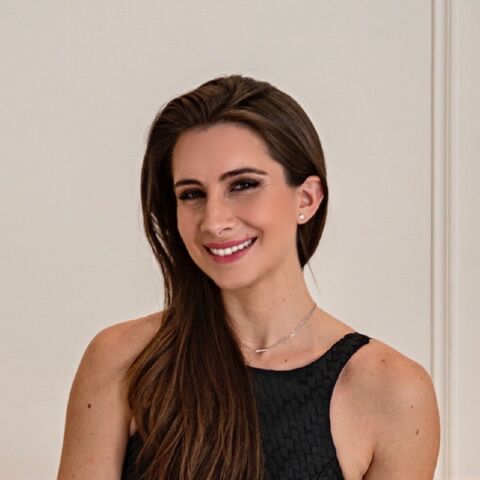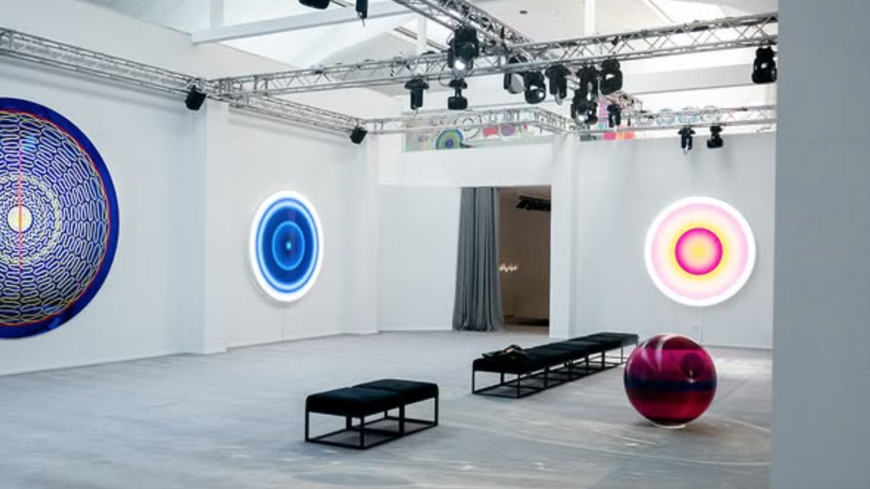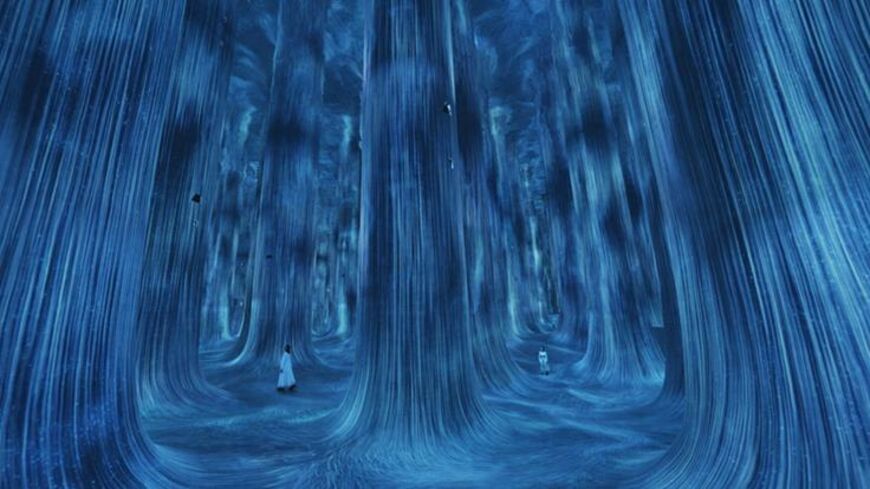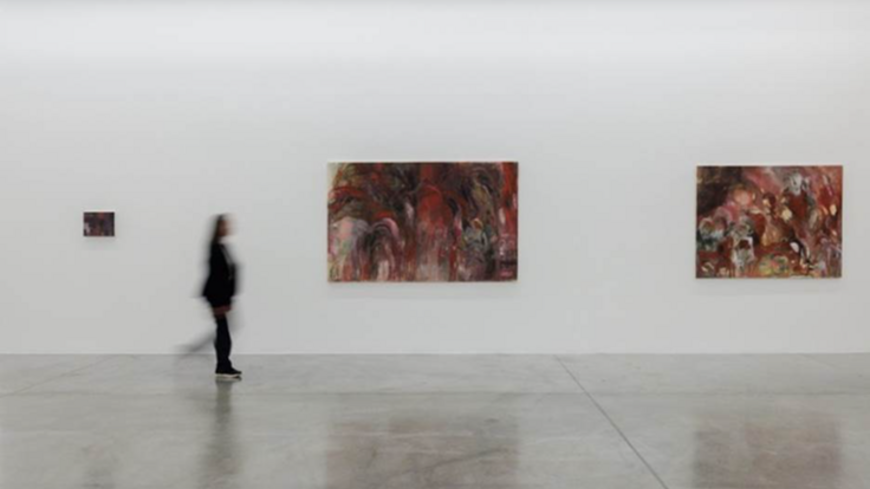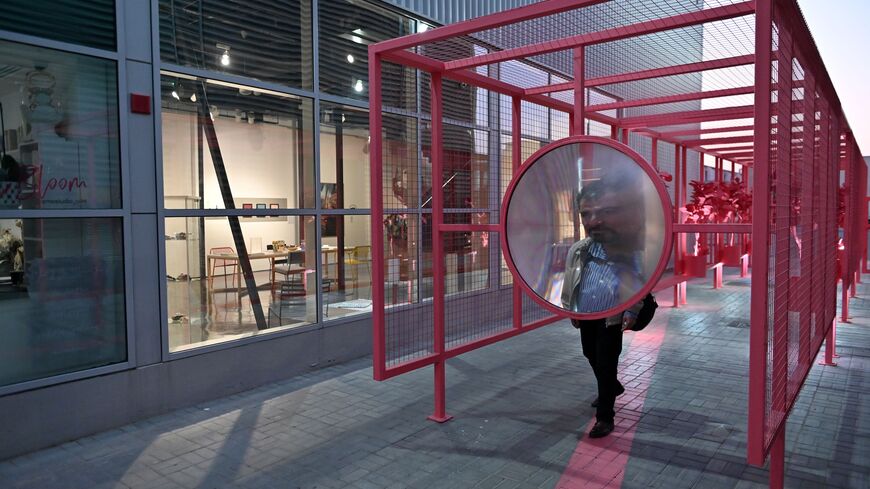AL-Monitor Dubai: Hoda Tawakol’s “My Mothers" exhibit at Gallery Isabelle
This week we guide you through exciting new exhibitions that have opened in Dubai, as well as evening events to celebrate the holy month.
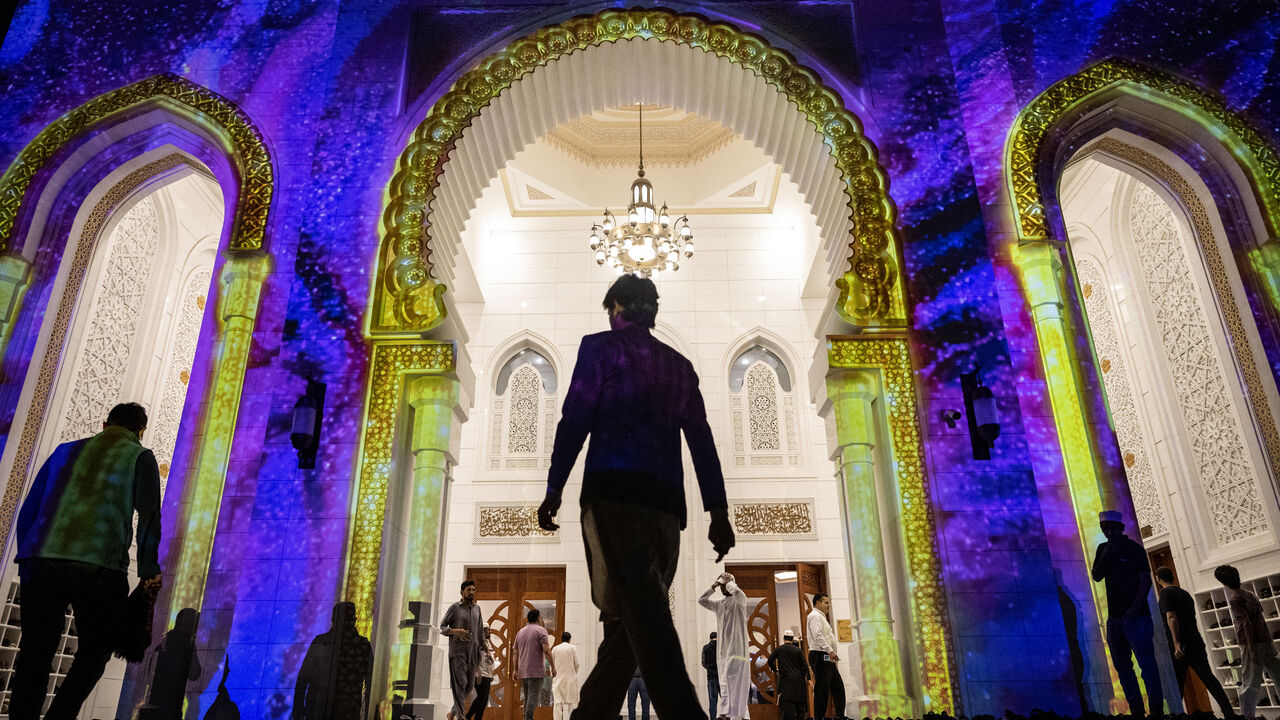
You're reading AL-Monitor City Pulse — Dubai, a guide to the city’s nightlife and proliferating music and food scene, as the Gulf metropolis solidifies its status as a regional culture hub. To get this newsletter in your inbox each week, sign up for free here.
Ramadan Kareem! This week we guide you through exciting new exhibitions that have opened in Dubai, as well as evening events to celebrate the holy month, top Ramadan tents out in the Arabian Desert for a truly authentic iftar or suhoor experience, and the 17th edition of Sharjah Art Foundation’s March Meeting.
Leading the week: Hoda Tawakol’s “My Mothers: The Siren, the Vessel, the Womb”

Hoda Tawakol’s “Fragments of Return #11." (Courtesy of the artist)
Marking Hoda Tawakol’s third solo exhibition at Gallery Isabelle in Dubai, this show explores the lives and influence of three maternal figures in the artist’s life. On view is a three-channel video installation titled “Fragments of Return” made of cut-out photomontages, alongside sculptural works such as Lure, a mixed media suspended piece in the center of the gallery, and Nude, a series of three sculptures made from nylon, synthetic hair and resin. Through these new works, Tawakol — a Franco-Egyptian artist born in London and raised primarily in Paris, now living and working in Hamburg, Germany — explores the themes of femininity, memory, and the challenges and complexities of motherhood.
The title of the show is inspired by “My Mothers: The Siren, the Vessel, the Womb,” a three-channel video composed of stitched Super-8 film fragments from the late 1960s to the mid-1980s. The work explores the intertwined stories of three key maternal figures in the artist’s life: her mother, Honey; her grandmother, Toutou; and her childhood caretaker, Hosneia. The central channel places the spotlight on Honey, a complex and multidimensional figure who was a stranger to Tawakol when she was 5 years old. The second channel centers on Toutou, who played a crucial role in raising Hoda and her brother while Honey chose to live her bohemian lifestyle in Paris. Most of the footage in the film was captured by Toutou herself. The third channel presents Hosneia, who nurtured Tawakol until the age of 6 before returning to Egypt to marry.
The captivating works, made in the artist’s mixed media style, incorporate family photographs, archival footage and delicate, intimate materials, and examine the tension between both the control, love and resistance the artist experienced while being raised.
Date: until March 28
Location: Gallery Isabelle in Alserkal Avenue
Find more information here.
Word on the street: Nara Ramadan Tent

An interior view of Nara Desert Camp. (Courtesy of Nara Desert Camp)
If you’re looking to experience the holy month in the Arabian Desert, then this is the Ramadan tent for you. Staged in the desert by Nara Escape, this tent is decorated as if it were an Arabian spice market. Guests relish in a variety of delicious Middle Eastern and international dishes under the starry sky amid the sand dunes. Live food stations serve regional delicacies like Saydieh, zesty curries and tajines, while other stations offer slow-cooked spit roast lamb, assorted Middle Eastern kebabs, firewood bread and fresh manakeesh. During the evening, diners enjoy a variety of experiences from camel rides to a falcon show and live oud music, making this a truly Arabian way — with a touch of luxury — to experience Ramadan. The tent is fully equipped with prayer rooms for both men and women.
Date: until end of Ramadan/end of March
Location: Nara Desert Camp
Find more information here.
Dubai diary

A view of Alserkal Avenue’s The Yard after dark. (Courtesy Alserkal Avenue)
Ramadan after dark at Alserkal Avenue
This Ramadan, Alserkal Avenue is staging Interrupting Patterns, an after dark moment to collectively pause and shift one’s rhythms during the holy month. The program includes yoga, poetry readings, performance, photography, film, art openings, theater and activities for children.
Date: March 8-9 & March 15-16
Location: Alserkal Avenue
Find more information here.
Ramadan nights at Sharjah Art Foundation
As part of the Sharjah Biennial 16, the Sharjah Art Foundation is hosting a Ramadan program that will take place at The Flying Saucer on March 8 and at Bait Obaid Al Shamsi on March 15. Featured are workshops in painting, drawing and weaving, as well as sessions where participants can gain insights into the creative processes of artists participating at the Sharjah Biennial.
Date: March 8 and March 15
Location: The Flying Saucer on March 8; Bait Obaid Al Shamsi on March 15
Find more information here.
March Meeting 2025: To carry songs
The 17th edition of Sharjah Art Foundation’s annual March Meeting takes place during the holy month of Ramadan, a period that lends itself to communal activities and the sharing of food, conversation and knowledge. Titled “To carry songs,” March Meeting 2025 focuses on how collectivity is a vital force in preserving and passing down knowledge.
Date: March 7-9
Location: Al Qasimiyah School, Al Manakh, Sharjah
Find more information here.
Book of the week: "Ramadan Journal With Rumi"

View from Dubai

“The Lesson” (2012) by Katarina Premfors, shot in Dubai, UAE. (Courtesy of Katarina Premfors)
UAE-based photographer Katarina Premfors, originally from Sweden, moved to Dubai in 1993 when she was 18 years old. Since her arrival, she has shot the Emirati metropolis during its period of great transformation, capturing Emirati culture with modern influences, glistening new skyscrapers and desert landscapes. This endearing shot captures an older Emirati man giving two younger Emirati boys a lesson, presumably a religious one, symbolic of the spirit of Ramadan.
Find more information here.
By the numbers
- The UAE is home to two coastlines. The longer coast — at over 700 kilometers (434 miles), excluding islands — faces north to the southern Arabian Gulf, while the shorter — at 70 kilometers (43 miles) — faces eastward into the Gulf of Oman.
- Eighty percent of the UAE’s land area is desert.
